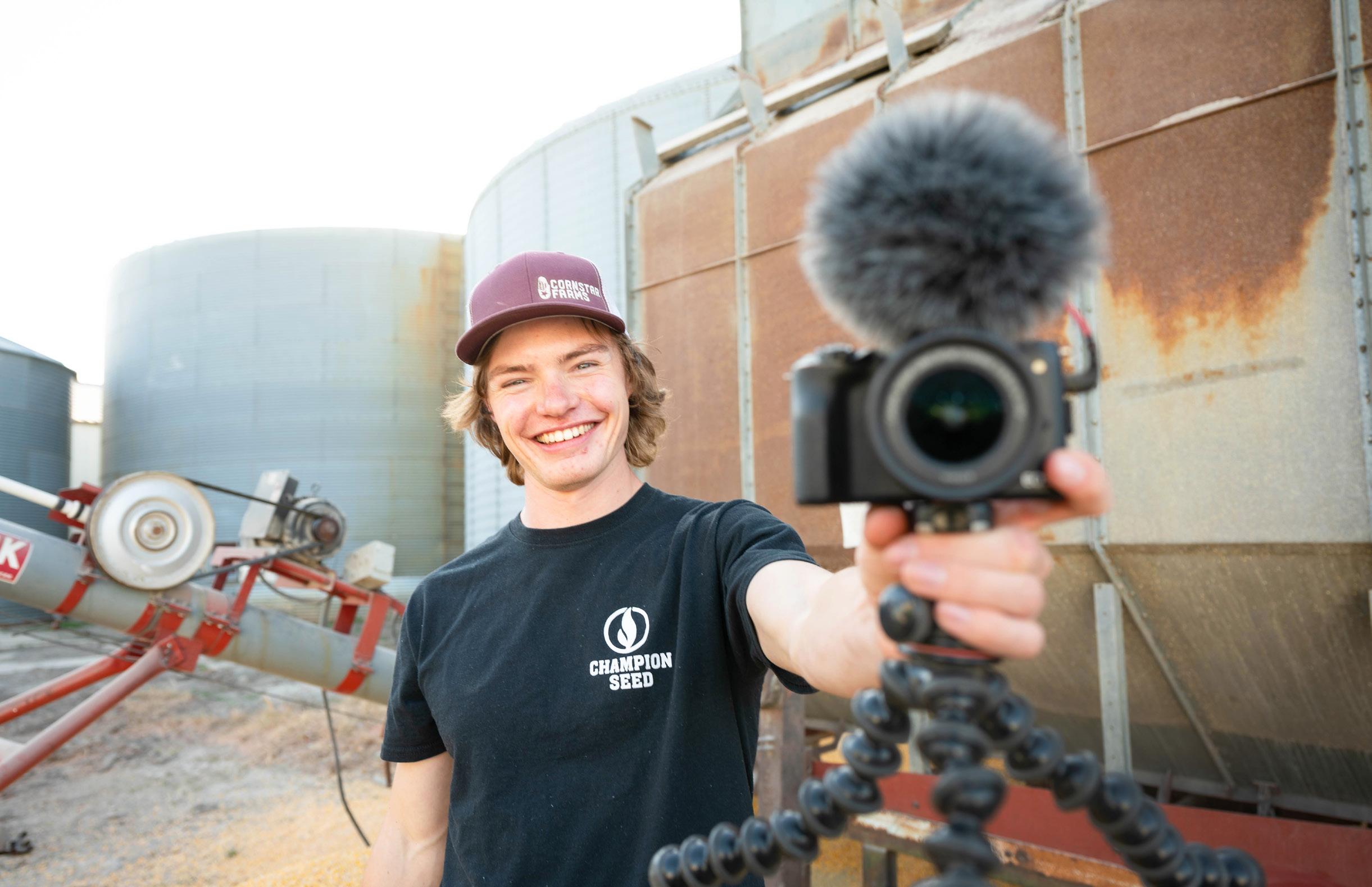
4 minute read
Activating
He got his first GPS in 1996 and took to the forum to learn from farmers who had already worked out the kinks in their systems.
“For those of us early on in the precision ag space it was incredibly powerful and beneficial,” Oswald says.
The online forum has been a place for Oswald to pick up new ideas. In some instances, it reaffirms or challenges something he’s learned in a meeting or elsewhere.
“The online community allows you to broaden your sources of information, but you still have to calibrate locally when it comes to agronomic practices,” Oswald says.
As in the case of no-till, he says. what may work in Alabama or South Carolina might not work on Oswald’s farm in northwest Iowa.
Correcting misinformation
While online discussions with farmers and consumers may differ from conversations at the coffee shop or on his farm due to the nature of the delivery, there are similarities, Oswald says.
Being thoughtful and sincere helps build connections and credibility, even if opinions differ.
“As in any coffee shop, there are misunderstandings and misinformation that gets shared. Sometimes you need to step in and correct misinformation to increase awareness,” Oswald says.
He’s found himself in this position on several occasions, even clearing up some misunderstandings regarding fiscal accountability related to the checkoff.
Building connections
Oswald is a go-to when it comes to no-till and conservation tillage practices in Iowa. He’s also looked at as an agricultural advocate. He’s shared glimpses of his farm life and family through the Iowa Food & Family Project blog.
These efforts are important not only in building an ag community, but bridging gaps between consumers and farmers, Kenney says.
“I think the Iowa Soybean Association does a great job connecting people and connecting with people,” Kenney says. “As an ag community, we’ve got to continue to be open and support programs that help farmers do this. I commend grower groups that have made communication a priority, especially farmers who have put themselves out there and aren’t afraid to share who they are and make really important connections.”
Window of opportunity
If there’s one thing the global pandemic has done to benefit agriculture, it has increased the awareness of where food comes from. In some cases, consumers saw empty coolers and freezers at their local grocery stores while they tried to stock up on meat and milk.
It’s an opportunity, Kenney says, to talk about the work farmers do to provide the products that eventually wind up in stores.
“From what I’ve seen since the pandemic started, people are even more acutely aware of where their food comes from or where it doesn’t come from,” Kenney says. “I think it’s an opportunity for anybody in the ag community –farmers and otherwise – to use this as even more of an opportunity to have conversations with people because their interest is piqued.”
TIPS
Oswald and Kenney share tips to make your connections more meaningful: 1. Listen. “We have to be good listeners and open to different perspectives. We get in trouble when we try to force conversations, ideas or ideologies; nobody likes that,” Kenney says. 2. Be consistent, credible and in context. “If you’re consistent and thoughtful in your responses, you’ll be respected for that.
Respect others, even if their view is different,” Oswald says. 3. Lurkers are listeners, too.
“In an online forum, remember that you’re not only talking to one person, but you’re also talking to all the people watching,”
Kenney says.
Contact Bethany Baratta at bbaratta@iasoybeans.com.
Tom Oswald, a farmer from Cleghorn, frequently posts and receives information from AgTalk, an online forum about precision ag.
Cole the Cornstar
Part educator, part entertainer, part motivational speaker. 100% farmer.
For a 23-year-old central Iowa farmer, educating the public about farming has created notoriety that reaches around the world.
The YouTube personality, who goes by the name of Cole the Cornstar, started his channel with the intention of being “a megaphone for agricultural education and innovation.” As his popularity has skyrocketed, the fourthgeneration farmer has been able to diversify Cornstar Farms by leveraging sponsorships and corporate support.
Cole, who farms with his father and brother, says the team then invests their
BY ANN CLINTON
earnings back into their operation. The extra income has allowed for equipment upgrades, grain storage updates and other farming investments that have catapulted them into financial security.
“I want to show people the American dream is not dead,” says Cole. “That’s one reason I make six videos a week. If someone asks me how we make it work, I have hundreds of videos showing exactly how we do it.”
Cole takes the responsibility of being an agricultural advocate in stride by keeping his content authentic and relatable. He says he is simply transparent and shows it how it is. He addresses dayto-day life on the farm, educating viewers each step of the way with a high-energy, matter-of-fact approach.
“Farming is not what it was 40 years ago,” Cole explains. “It’s a whole different game. We are operating with a lot of technology now and you have to be very scientific in your thinking. Decisions need to be factual, although there’s a lot of calculated risks involved. You have to push yourself.”
Check out the Cornstar family on their YouTube channel, “Cole the Cornstar.”

Cole the Cornstar records a segment for his wildly popular YouTube channel.




